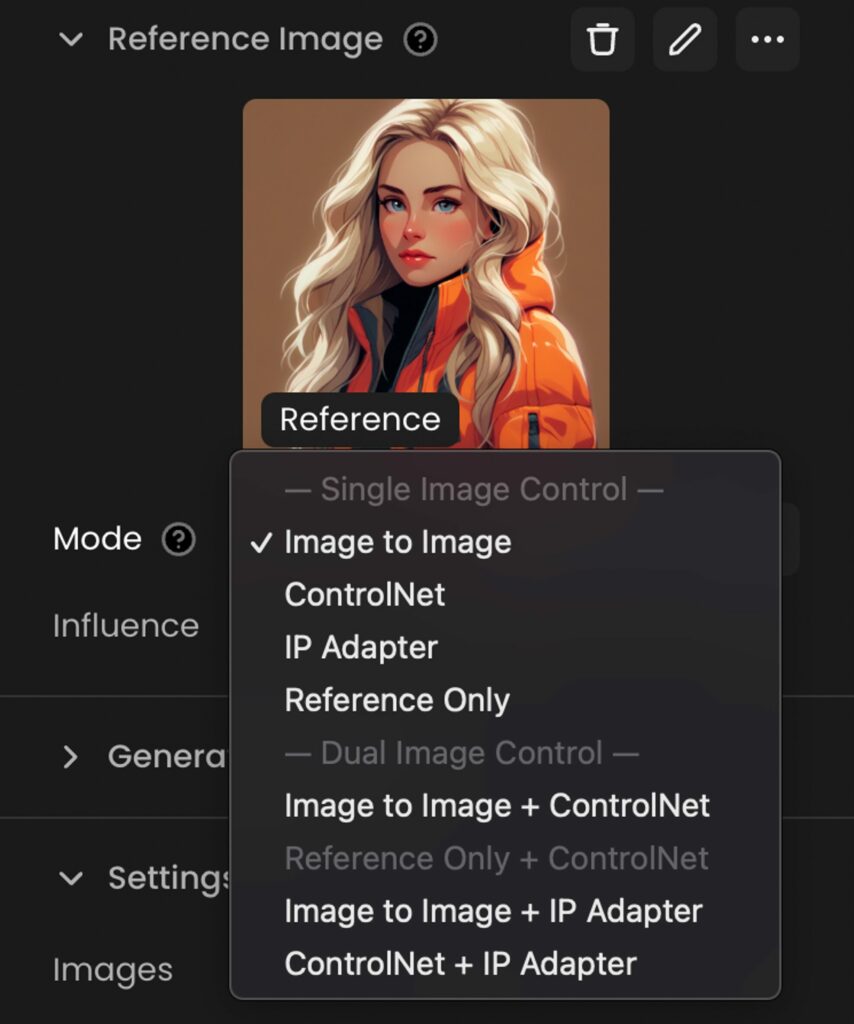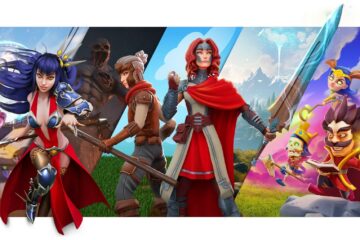Scenario is the first GenAI toolkit for the gaming industry, offering the most complete suite of features for creative precision to game studios and indie developers.
Through advancements like LoRAs and SDXL Models, it is at the forefront of game development, facilitating the creation of AI models by anyone from anywhere and at any time to easily incorporate style-consistent assets in current game production workflows for ideation, conception, production, and marketing.
Scenario is available as a Web app or API that can directly be integrated within popular engines such as Unity and Unreal or directly in-game, thus adapting to diverse project needs and revolutionizing the traditional game creation process.
Advanced Features
Scenario isn’t just about creating assets; it’s about enriching the entire artistic process by giving full creative control.
ALSO READ: Designing Urban Game Environment | TOP 5 Tips from Game Developers
Features like Style Transfer, Character transfer (IP Adapter), and 12 ControlNet modes allow for precise customization and adherence to reference materials, ensuring creations remain unique and copyright-compliant.
Model Training
A significant advantage offered by Scenario is its robust model training capabilities, empowering users to custom-train AI models tailored to specific game development needs.
It allows users to train and refine their own AI models (primarily LoRAs) on a large scale for game asset creation, supporting SDXL and SD 1.5 models that understand and replicate artistic styles, game mechanics, and narrative elements.
This facilitates maintaining a consistent aesthetic and gameplay experience throughout projects, by providing a seamless interface for both beginners and experts, ensuring that even the most intricate design requirements are met efficiently and effectively.
Scenario also simplifies the integration of both in-house and community-sourced models, including those from platforms like HuggingFace and CivitAI. Users can manage all their models in one central location, leveraging an extensive toolkit and API to tailor AI capabilities directly to their project needs.
Additionally, unlike other platforms where control may be limited, Scenario provides full control over the training process, allowing for precise adjustments and refinements.

IP Adapter and ControlNet Modes
What sets Scenario apart is not just the breadth of features like text & image prompts, img2img conversion, and the innovative 12 ControlNet modes, but also the depth with which these features can be customized.
ControlNet offers various modes for enhanced image generation. For instance:
- Depth: Generates depth maps to provide nuanced depth information.
- Pose: Identifies and replicates human poses from images.
- Segmentation: Creates color segments to identify main objects.
For more detailed information, visit the Scenario ControlNet guide.

IP Adapters are transforming project development by enabling the integration of images as prompts.
This allows the effortlessly merge of artistic visions with AI’s capabilities by enabling the use of detailed images to direct the creative output.
ALSO READ: Pokemon TCG Crimson Haze Set: All You Need To Know
All while ensuring creations remain unique and copyright-compliant, and allowing for precision in adherence to reference materials, forming a robust advancement that enriches the artistic process rather than replacing it.

Scenario Integration in Game Development Tools
Integrating Scenario’s AI into Unity enhances creative processes by providing developers with tools that streamline asset creation and scenario development.
This integration allows for the dynamic generation of environments, characters, and narratives, leveraging AI to interpret, adapt, and manifest creative visions in real-time within Unity’s versatile engine.
By utilizing Scenario’s AI, anyone can push the boundaries of conventional game design, introducing a level of detail and responsiveness previously unattainable.
ALSO READ: Rise Of Generative AI In The Game Industry: Pros And Cons
This not only boosts efficiency but also paves the way for more complex, engaging, and personalized gaming experiences, showcasing the potential of AI in advancing the frontier of interactive storytelling.

Upscaler: Elevating Game Asset Quality
The Scenario Upscaler uses sophisticated algorithms to enhance the quality of textures, character models, and environments.
This tool simplifies the asset enhancement process, allowing developers to focus on creating visually stunning games that redefine digital storytelling.

Practical Applications and Use Cases
Scenario provides detailed guides and examples to help developers produce assets efficiently:
- Designing Seasonal LiveOps Icons: Simplify workflows for timely content updates.

- Training Models for RPG Avatars: Enhance player engagement with customizable avatars.

- Isometric City Builder: Create precise tile sets for varied game worlds.

- Creating Dynamic Game Backgrounds: Streamline the design of game backgrounds with enhanced efficiency and quality.

Case Study: InnoGames’ Streamlined Production with Scenario
InnoGames, a leader in mobile and browser games, has integrated Scenario’s AI solutions to streamline the creation of game assets. Using Scenario, InnoGames has enhanced various aspects of game development, such as character design and icon creation. This collaboration has allowed InnoGames to quickly test new ideas and maintain style consistency across their games, significantly boosting productivity.
ALSO READ: 2 Ways To Play PS5 In Tesla Exposed
Key Achievements:
- Character and Icon Generation: Fast and diverse creation of game characters and icons, minimizing the need for manual adjustments.
- Loading Screens and Backgrounds: Efficient conceptualization and rendering of aesthetically consistent loading screens and game backgrounds.
- Enhanced Collaboration: Multi-user collaboration capabilities enable effective sharing and creation processes within the team.
Dario Berutti, Head of Art at InnoGames, praises Scenario: “It allows us to shorten our production time, stay consistent with our styles, and quickly test new ideas. It’s becoming an integral part of our tool chain.”
The Future of Game Development with Scenario
The integration of Scenario into the game development process marks a significant shift in asset creation and enhancement.
By automating what was once a manual and time-consuming process, Scenario not only saves time but also expands creative potential, making it an essential tool for developers aiming to stay at the cutting edge of game design innovation.


